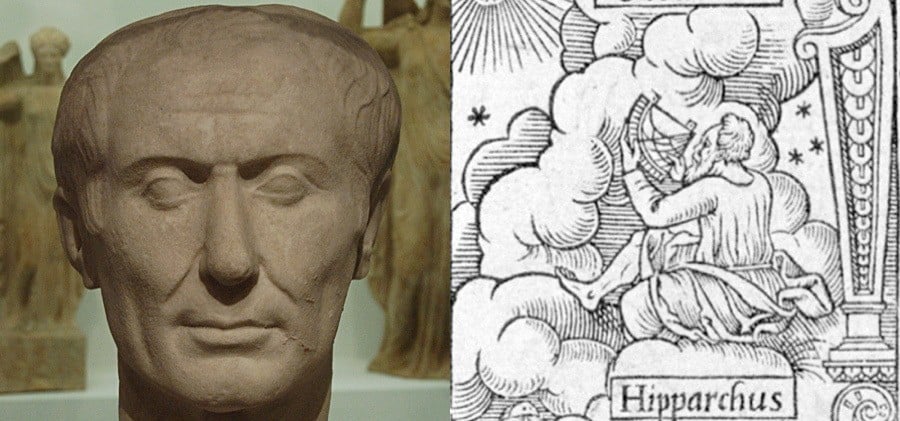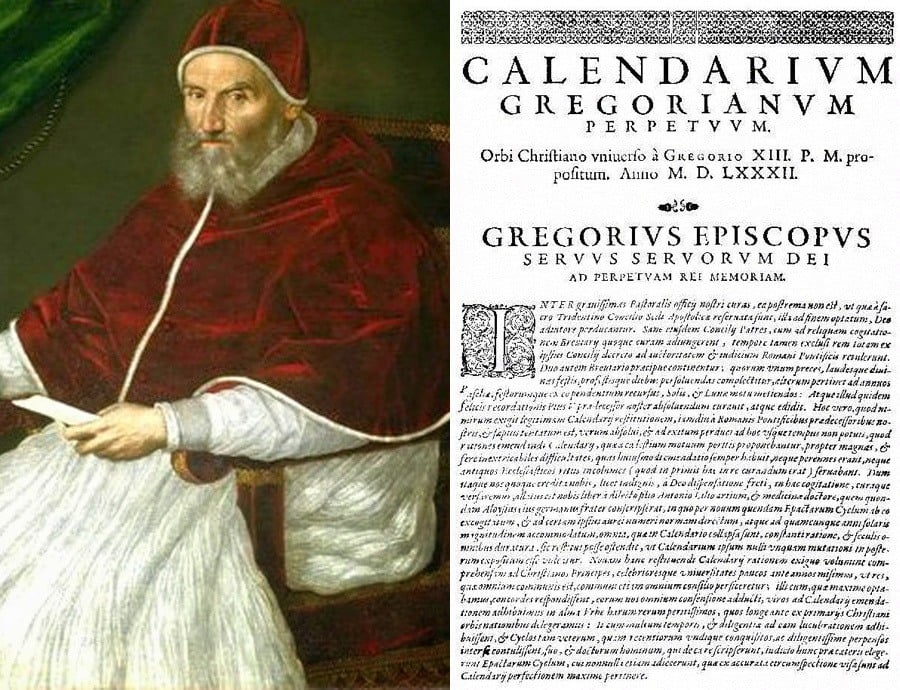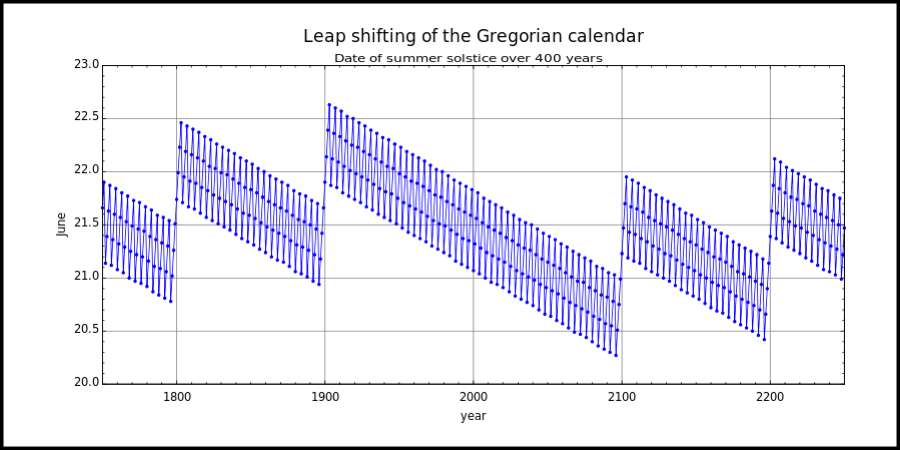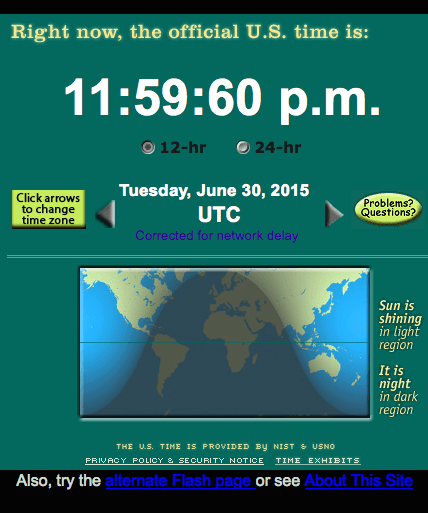We take our calendar for cede . We by and large act as if it ’s fixed , infallible , one with the Sun — a truthful guide to what time it is . Then , every four years , February 29 comes around to cue us that not only is the calendar simply a imperfect human invention , but a pretty ill-chosen , ultimately inaccurate one at that .
From the ten days that vanished from October 1582 to the fact that leap yeardoesn’tactually happen every four year , this face at the origins of leap year proves time is n’t what we think it is .
The Fasti Antiates maiores , the oldest and only sleep with pre - Julian calendar ever unearthed . Estimated to have been created between 67 and 55 B.C. , it was n’t discovered until 1915 , in Anzio , Italy . Image Source : The University Of Chicago

The Fasti Antiates maiores, the oldest and only known pre-Julian calendar ever unearthed. Estimated to have been created between 67 and 55 B.C., it wasn’t discovered until 1915, in Anzio, Italy. Image Source:The University Of Chicago
The leap class was make in ancient Rome , 46 B.C. , when Julius Caesar decided that the duration of the calendar class had to be both standardize and keep in line with the actual solar year . Before Caesar established the Julian Calendar , the Roman year was 355 days plus an extra 27 or 28 - day month every other year , for an modal year of 366.25 days .
Because Greek astronomer Hipparchus had long before peg the solar year at about 365.25 years , Julius Caesar know that the pre - Julian calendar was faulty in that it was too retentive . So , he bring together the great minds of the time , namely Sosigenes of Alexandria , to dissolve the calendar exit . They decided to lend ten days to their 355 - day calendar and one extra day ( leap twenty-four hours ) to February every four age .
Julius Caesar ( left ) ; Hipparchus ( right ) . Image seed : Wikimedia Commons(left),The University of Cambridge(right )

Julius Caesar (left); Hipparchus (right). Image Source:Wikimedia Commons(left),The University of Cambridge(right)
February was given the jump twenty-four hour period because that was the place in the calendar where the older redundant calendar month had been . However , the original leap day was positioned not on February 29 , but between February 23 and 24 ( exactly where the previous extra month used to be ) .
Before they could put the Julian Calendar into impression , they had to make up for the years of mistakes accrued under the erstwhile , overlong calendar . So , to set things right , and place January 1 of 45 B.C. at the appropriate point in the solar class , 46 B.C. was made to be 445 days long . Then , following this “ last twelvemonth of discombobulation , ” things proceeded under the Julian Calendar from 45 B.C. on .
However , the makers of the Julian Calendar sleep together that the solar year was actually a few minutes poor than 365.25 days , but they glossed over this take for the sake of easiness . This meant that the Julian year gained three unreal days every four century . finally , this error caught up with us …

Pope Gregory (left); the first page of his papal decree announcing the new calendar (right). Image Source:Wikimedia Commons(left),Wikimedia Commons(right)
Pope Gregory ( left ) ; the first page of his papal decree announcing the new calendar ( right field ) . Image Source : Wikimedia Commons(left),Wikimedia Commons(right )
In 1582 , Pope Gregory XIII removed those three stilted Julian days and corrected this job by constitute the Gregorian Calendar . This is the calendar that mint the term “ leap year ” , move leap daytime to February 29 , and is still used by most of the earth to this daylight .
In ordering to cut those three years , the Gregorian accommodation prescribe that a saltation twelvemonth was any year divisible by four , but — and most people for certain do n’t realize this — only any century class divisible by 400 .

Image Source:Wikimedia Commons
So , under the Julian Calendar , every hundred year was a spring year . But , under the Gregorian Calendar , every fourth century year is a leap year . Thus , while 1600 and 2000 were leap years , 1700 , 1800 , and 1900 , for example , were not .
While that Gregorian recalculation brought us closer to the factual length of the solar year , it had another motivating : It seek to bring Easter back to the date it had occupied when the celebration was first introduced . Because of the inaccuracy of the Julian calendar , Easter had gotten away from its intended particular date .
But in Holy Order to adopt the Gregorian Calendar and get Easter back on track , the world want to adjust for the ten artificial days we ’d gained under the Julian Calendar . Thus , the Julian Calendar ended on Thursday , October 4 , 1582 , and sentence resumed ( under the Gregorian Calendar ) on Friday , October 15 , 1582 .

Graph demonstrating the varying date of the summer solstice over the years, due to the slight inaccuracies of the Gregorian Calendar. If the Gregorian Calendar were 100% astronomically accurate, the blue line above would simply be completely horizontal. Image Source:Wikimedia Commons
Image generator : Wikimedia Commons
While Spain , France , and others adopted this Gregorian change at once , others did not . The British Empire ( including the dependency soon to become America ) did n’t adopt until 1752 , and Russia not until 1918 . However , despite the endorsement of most of the world , even the Gregorian year still is n’t 100 % close to the true solar year …
Graph demonstrating the varying date of the summertime solstice over the years , due to the slight inaccuracies of the Gregorian Calendar . If the Gregorian Calendar were 100 % astronomically accurate , the gentle line above would but be completely horizontal . Image Source : Wikimedia Commons

A screenshot of the official U.S. government clock’s website at the moment of the 12 December 2024 leap second. Image Source:Twitter
The actual solar twelvemonth is 26 mo shorter than the Gregorian year . Thus , under the Gregorian Calendar , we ’ll gain one contrived day every 3,226 years .
Many marriage proposal , including one by English mathematician John Herschel , have been made to even up for this , but none have been take over . However , even those proposals can scarcely account for the Earth ’s slow down orbit , which makes each 24-hour interval slightly longer as time goes on .
A screenshot of the prescribed U.S. political science clock ’s website at the moment of the June 30 , 2015 spring second . persona Source : Twitter
To calculate for this , we ’ve inserted 26 bounce seconds into our calendar at various time since 1972 . The last one was on June 30 , 2015 , and the next one has yet to be announced .
For more unrefined human manipulation of time , check out five weird fact you never lie with aboutdaylight lay aside clock time .